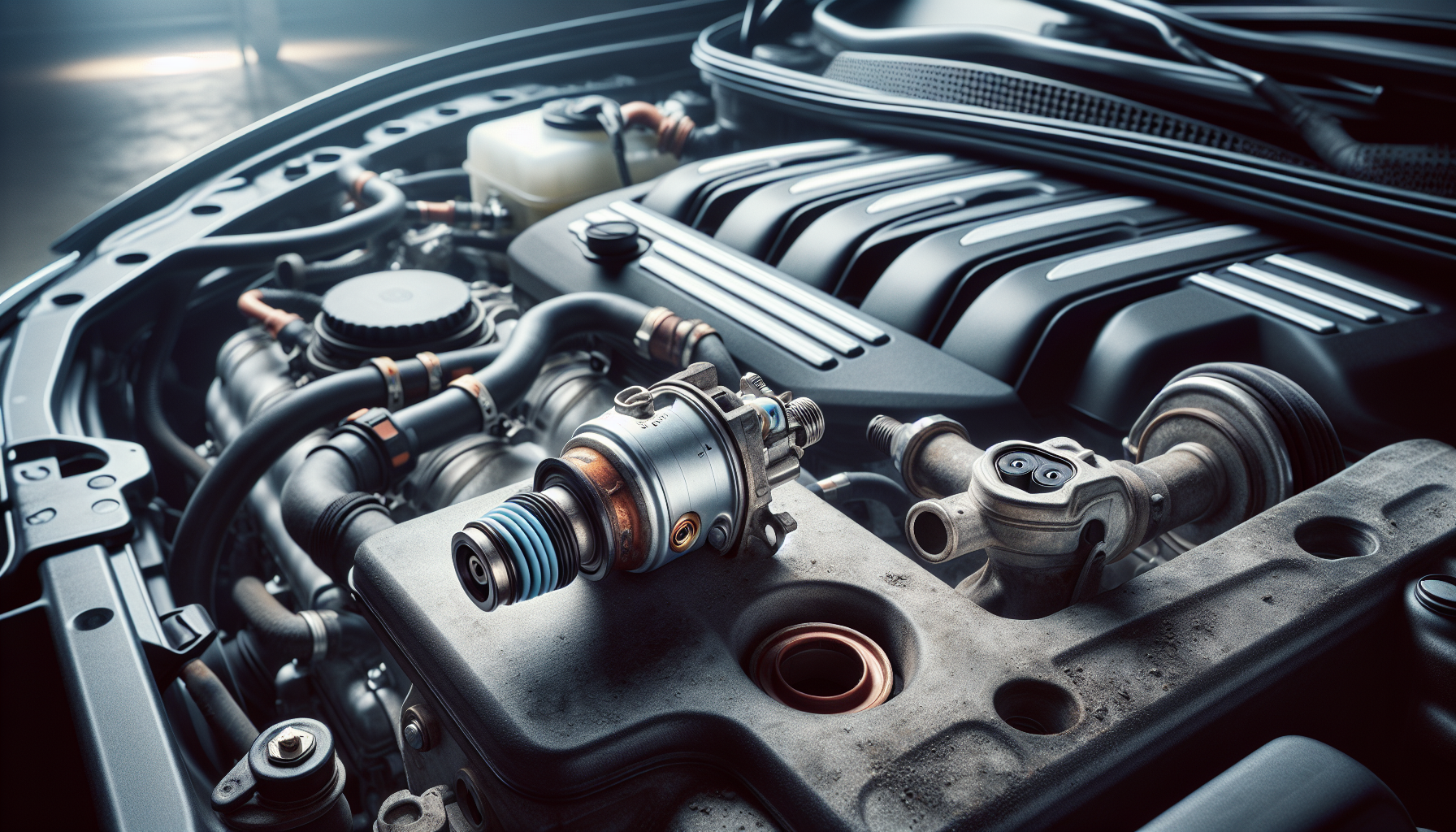Suddenly, a glow from your dashboard—the check engine light BMW i3. Whether this is your first scare or just another round of car troubles, understanding why it’s there is crucial. Sit tight as we dive into the reasons your check engine light BMW i3 might be on, from simple fixes you can do yourself to more complex issues that require a mechanic’s touch, without fuss or technical overwhelm.
Key Takeaways
- The BMW i3’s check engine light may indicate a range of issues from minor, like a loose gas cap, to major ones such as a failing catalytic converter or faulty sensors, all of which can affect the vehicle’s performance and efficiency.
- The Carly OBD diagnostic tool, particularly suited for BMW models, allows owners to understand the specific reasons behind engine alerts by wirelessly connecting to the car’s system to read, interpret, and reset diagnostic data.
- Ignoring the check engine light can lead to serious engine damage and expensive repairs, while resetting the light without addressing the underlying problem is ineffective and can result in persistent mechanical issues.
Understanding Your BMW i3’s Check Engine Light

Your BMW i3’s performance hinges on a sophisticated system of components and sensors, which collaboratively provide the driving experience you love. However, when a problem arises, your vehicle communicates this frequently through an illuminated check engine light.
GAIN MORE CONTROL OF YOUR CAR WITH THE CARLY FEATURES
Check the exact pricing of Carly for your car brand!

Fast International Shipping with DHL

14 days adaptor return policy

Excellent customer support

Lifetime warranty in the hardware
SEEN IN
From something as simple as a loose gas cap to more serious issues like a faulty oxygen sensor or a faulty mass airflow sensor, a variety of factors can trigger this warning. Maintaining the correct air-fuel mixture is heavily dependent on both the oxygen sensor and the mass airflow sensor, whose malfunctioning can result in the illumination of the check engine light.
But it’s not just these sensors you need to be mindful of. Other potential causes of the check engine light turning on in your BMW i3 include:
- Worn spark plugs or wires
- Problems with the fuel injection system
- Vacuum leaks
- Failing catalytic converters
All of these issues can impact your BMW i3’s performance and efficiency.
Therefore, you should not ignore it if you observe your check engine light illuminating. It’s your vehicle’s way of communicating that it needs your attention. And as we’ll explore, addressing the issue promptly can save you from costly repairs and keep your BMW i3 running smoothly.
Carly OBD: The Optimal Tool for Diagnosing Your BMW i3’s Engine Issues

The Carly OBD stands unrivaled for diagnosing the reason behind your check engine light’s illumination. Designed specifically for BMW models, including the i3, this diagnostic scanner connects to your car’s OBD2 port under the steering wheel, allowing you to read your vehicle’s memory and data.
A distinctive feature of Carly OBD is its wireless functionality. By connecting to your phone over Bluetooth, you can:
- Monitor your BMW i3’s performance in real-time
- Access diagnostic information
- Reset fault codes
- Customize your car’s settings
This ease of use makes it an indispensable tool for any BMW owner, especially when visiting a service center.
Yet, Carly OBD does more than delivering data; it assists you in interpreting its meaning. From monitoring voltage for various components to offering customizable settings, this tool can identify and resolve electrical and lighting issues in your BMW i3.
Moreover, Carly OBD’s capability to read fault codes from your vehicle’s memory contributes to rectifying issues, thereby assuring your BMW i3’s efficient operation. And with its companion mobile app, you’ll have immediate access to your vehicle’s data wherever you are, making it easier than ever to keep your BMW in peak condition.
Troubleshooting Tips: When Your Check Engine Light Comes On

Your check engine light has come on. What should you do now? First, it’s important to understand the difference between a steady and a flashing check engine light. A steady light might indicate a minor issue that needs attention, while a flashing light suggests a serious problem that requires immediate attention to prevent major damage.
The causes for the check engine light are many, including:
- Malfunctioning oxygen sensor
- Issues with the fuel injection system
- Broken head gasket
- Defective spark plugs
- Incorrectly installed aftermarket parts
- Dirty mass airflow sensor
If the check engine light extinguishes on its own, the problem might have been transitory. However, if the light remains on for 20-40 miles after the presumed fix, such as tightening a loose gas cap, it is advisable to get your vehicle checked.
In fact, a quick troubleshooting step after refueling is to check and tighten the gas cap on your gas tank. A loose gas cap can often trigger the check engine light, and this simple action can often solve the issue without additional intervention, preventing your vehicle from potentially starting to lose fuel.
The Cost of Ignoring Your Check Engine Light
Disregarding an illuminated check engine light may appear convenient, but it could have grave repercussions. For starters, it can result in significant engine damage, including fuel burns harming the catalytic converter and potential engine failure, which requires immediate attention. A bad catalytic converter is one such issue that could arise from ignoring the check engine light.
The cost of neglecting issues indicated by the check engine light can be heavy on the pocket. Here are some potential costs:
- Average repair cost: $398
- Engine replacement: $7,124
- Catalytic converter replacement: hundreds of dollars
- Fixing ignition coil failure due to faulty spark plugs: hundreds of dollars
These costs can add up quickly, so it’s important to address check engine light issues promptly.
However, potential repair costs should not be your sole concern. Ignoring the check engine light can also lead to:
- Decreased fuel efficiency, resulting in increased fuel costs over time
- Increased harmful environmental emissions from a malfunctioning emissions control system
- Elevated risk of road accidents from driving with engine impairments
Resetting the Check Engine Light: Is It A Solution?
You may consider merely resetting the check engine light to eliminate that irritating little symbol. Yet, here’s the catch: resetting the check engine light doesn’t address the fundamental mechanical issues; it merely switches off the light indicator without rectifying the problems.
The check engine light may reset on its own if the underlying cause is minor and corrected, such as securing a loose gas cap. Some issues may not reappear after resetting if they were temporary, like a rare engine misfire.
However, after a check engine light reset, if the light stays on, it can take the vehicle’s computer system 10 to 20 cycles or 50 to 100 miles to completely reset. Continuous illumination after this driving period suggests there are unresolved issues that require a mechanic’s attention.
So, if the check engine light reilluminates post-reset, this is a strong indication of persistent mechanical problems that demand a professional service engine check and check engine light diagnosis and repair.
Navigating Check Engine Light Codes and What They Mean
Upon illumination of your check engine light, your BMW i3’s electronic control unit (ECU) records specific codes, referred to as diagnostic trouble codes (DTCs). These codes can be retrieved using a scan tool when the ECU detects a problem it cannot correct, prompting the check engine light to turn on.
What is the significance of these codes? This is where tools such as Carly’s app prove useful. With detailed insights into the issues referenced by the codes, Carly’s app aids in diagnosing and resolving problems.
Whether you’re an experienced BMW owner or a newcomer to the i3 family, comprehending these codes is vital for preserving your vehicle’s health. After all, knowledge is power – and when it comes to your BMW i3, it’s the key to a smooth, enjoyable ride.
Summary
In essence, the check engine light on your BMW i3 is more than just a warning sign. It’s a signal that your vehicle needs your attention – and ignoring it can lead to costly repairs and decreased performance. From understanding the different causes of the check engine light to using tools like Carly OBD for diagnosis, taking proactive steps can save you from headaches down the line. So, the next time that little yellow symbol illuminates on your dash, you’ll know exactly what to do.
Frequently Asked Questions
What does a solid check engine light mean?
A solid check engine light means you should bring your vehicle in at your earliest convenience, while a flashing check engine light indicates an urgent situation that requires immediate attention. Don’t ignore these warnings!
What does check engine light mean on BMW i3?
The check engine light on a BMW i3 could indicate issues with the oxygen sensor, fuel injection system, head gasket, emissions control, mass airflow sensor, or spark plugs. It’s important to have the vehicle diagnosed by a professional to determine the specific cause.
How does Carly OBD help diagnose engine issues?
Carly OBD helps diagnose engine issues by connecting to your car’s OBD2 port, providing real-time data and fault code readings, and allowing for customized settings that aid in identifying and resolving problems.
What are the costs of ignoring the check engine light?
Ignoring the check engine light can lead to engine damage, decreased fuel efficiency, higher fuel costs, and an increased risk of accidents. It’s important to address the issue as soon as possible.
Can resetting the check engine light solve the underlying issues?
No, resetting the check engine light only turns off the indicator and doesn’t address the underlying issues. If the light comes back on, you should seek professional help to resolve any persistent mechanical problems.

